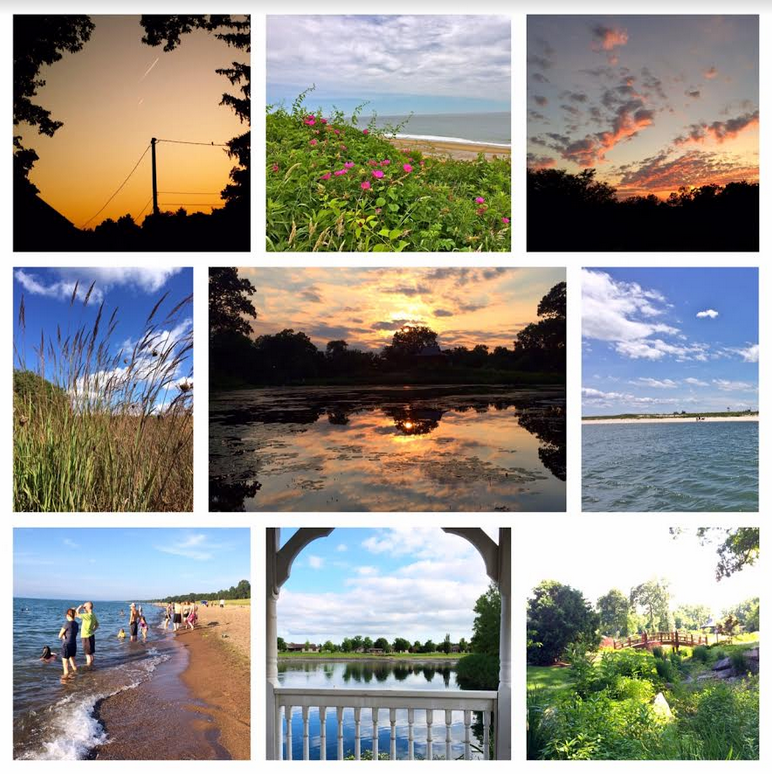Glimpses of Healing and Hope
October 2, 2017
By Jane Bishop Halteman

Deep peace of the running wave, the flowing air, the quiet earth, the shining stars…the incarnational tradition focuses on the relationship between the invisible spirit and physical reality, helping us to see God’s divine presence in the material world in which we live.
“Home, for me, this place where I first encountered the mysteries and wonders and struggles of life, is the Pacific Northwest, where I grew up among the tall fir trees and wide and wild rivers and the forceful Pacific Ocean and moss-covered rocks and serious banana slugs. My memories of the Northwest are enchanted: full of wonder and fascination and rapture,” guest preacher Gwen told KRMCers gathered Sunday for the third in our worship series offering glimpses inside the six streams of spirituality described by Richard Foster in his Streams of Living Water.
Describing her connection to the land where she spent her childhood, in particular to a special rock, Gwen spoke of the calming effect of that experience: “Regardless of the circumstance, if I could just sit on that rock, sprayed by the chilly water and touched by the warm sun, watching the occasional fish jumping through the current, sitting on that rock, along the Salmon River, I was in God’s presence. I was at home. Comforted. Loved. Supported. This was sacred space wherein I experienced God’s presence in and through and as the mysterious, enchanted creation that surrounded me.”
Identifying the incarnational stream on which we focused Sunday as “both mystical and concrete, earthy and cosmic, matter and spirit,” Gwen suggested that the “heart of incarnational spirituality” involves living “in the world enchanted by the presence of God expressing love in us and around us and through us,” ultimately preparing us “to pour ourselves out for others, even as Jesus did.”
Also referenced as the sacramental life, the incarnational tradition centers on the relationship between the invisible spirit and physical reality, helping us to see God’s divine presence in the material world in which we live. God manifests God’s self in God’s creation, even in the midst of mundane activities, whenever and wherever we acknowledge God, according to the Foster/Renovare website.
Christine Sine of Mustard Seed Associates speaks of the incarnational tradition as central to Celtic spirituality, in which the presence of Christ was “almost physically woven around the lives of the Celts.” Sine suggests that, in the spirit of the Irish faithful, God not only encircles and protects creation but also enlivens, activates, and inspires it.
Gwen proposed that the incarnational stream begins “with a willingness to step away from analysis and critique and systematic legalization and to rest in the enchanted world that is the embodiment of the love of God made visible to us.” And perhaps stepping away as well from our screens and other preoccupations so that we don’t “unintentionally miss out on the enchanted Presence of the wind rustling through the autumn trees, the crickets joined in a chorus of life as we walk by, the woodpecker, the squirrels, the geese, our own steps through the crackling leaves, calling us to listen. We miss out on the flowing water in the nearby river and the heat from the sun and sound of the mockingbird, calling over and over again. This is the beginning of incarnational spirituality: love made known to us in matter and spirit—right here. Right where we are.”
Her vision of the enchanted life looks like this, she said: “wherein our eyes are opened to be surprised by the wonder-filled and holy presence of the God of Love in the concrete and beauty-filled expressions of love and awe and mystery all around us. And wherein our response to this enchanted life we have been invited to embrace is a free-flowing outpouring of love to the world around us.”
We do not have to look far to find suffering these days, according to Gwen: “In the stories of those whose lives have been turned upside down by disasters in Puerto Rico and Bangladesh and Houston and Mexico, in Syria and Florida and the Gaza Strip; in the trauma and suffering created by a history of slavery in our land and the racial injustice that continues to threaten our people and divide our land into those who have access to wealth and security and sustenance and those who do not; in the pain and fear of those in our midst who are undocumented and living in tenuous circumstances or those who are finding their way in life along the LGBTQ spectrum or those whose daily existence is a challenge because of family struggles or depression or anxiety.”
She challenged us “to find ways to express, in tangible terms, the love that is and can be the source of sustenance for us all. This takes attention and creativity and a willingness and intention to receive the love of God into our lives so that we can find ways to pour it out in the suffering world around us.”
In a small move toward the incarnational tradition, we chose to use grapes instead of grape juice to celebrate World Communion Sunday yesterday. I loved how Gwen prepared us to take in the spiritual significance of this ritual which uses physical props to make its point: “On this day, people around the world will take this very real bread, and these very real grapes and they will hold them in their hands, knowing that these are material things infused with spiritual significance. And these very physical elements will serve to remind and inspire and enliven all who walk this earth seeking to embody love in the manner of Jesus, the Christ.”
How have you been reminded, inspired, enlivened to embody love? In what tangible ways might you share the love that is the source of sustenance for all?